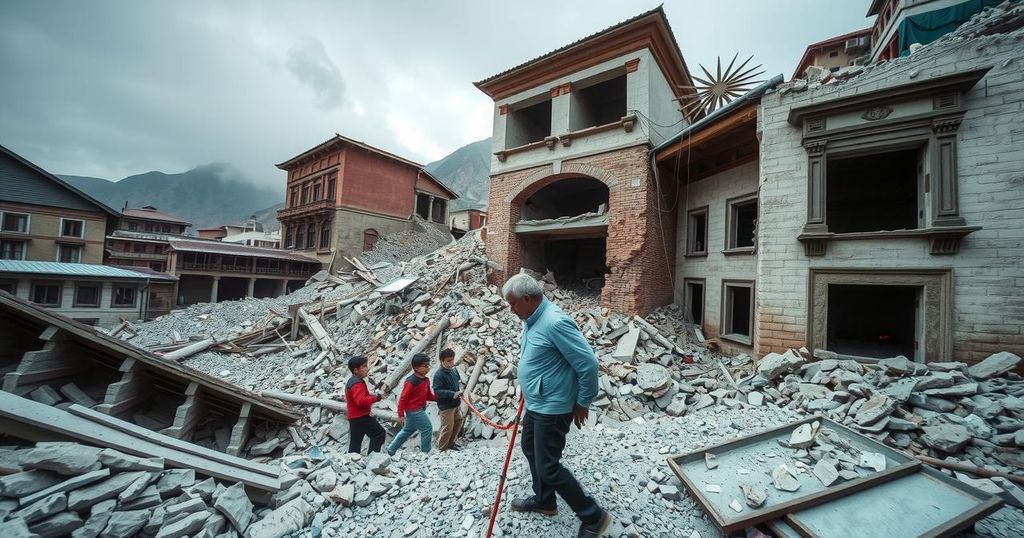Tibet Earthquake: 7.1-Magnitude Tremor Causes Devastation and Loss of Life

A 7.1-magnitude earthquake struck Tibet, leaving at least 126 deceased and many injured. Extensive damage occurred, with over 1,000 homes affected. Rescue operations are ongoing amidst numerous aftershocks, and the government has allocated 100 million yuan for relief efforts while mobilizing thousands of responders.
On Tuesday, a significant earthquake measuring 7.1 on the Richter scale struck Tibet, a remote region in western China, causing devastation across the area and parts of Nepal. The tremor resulted in at least 126 fatalities and injuries to around 188 individuals, with numerous others trapped beneath the debris of collapsed buildings. Rescue operations are actively underway, as emergency teams navigate through the wreckage in an attempt to locate survivors amidst ongoing aftershocks, which have been recorded at approximately 150 in the hours following the initial quake.
The earthquake’s epicenter was determined to be in Tingri County, at a shallow depth of around 10 kilometers (6 miles), which tends to exacerbate the level of destruction. Over 1,000 homes have been reported damaged, and video footage from state media has depicted the extent of the devastation, illustrating streets littered with debris and crushed vehicles. In nearby Nepal, residents experienced strong tremors, prompting many to flee their homes, though no significant injuries or structural damages have been reported there.
Chinese authorities have mobilized a vast rescue effort in response to the disaster. President Xi Jinping has urged for immediate action to rescue trapped individuals as well as plans to resettle those who lost their homes. More than 3,000 rescuers have been dispatched to the affected region, alongside an allocation of 100 million yuan (approximately $13.6 million) for disaster relief efforts. The affected locality is characterized by harsh winters and high altitudes, complicating recovery and rescue operations further.
The tectonic setting of the region plays a pivotal role in the magnitude of earthquakes experienced, as it is situated where the Indian and Eurasian plates converge. Such geological activity is known to not only produce powerful seismic events but can also lead to alterations in the topography of the Himalayas themselves. As the situation develops, further assessments of the damage and ongoing support for the affected communities remain critical.
The earthquake that struck Tibet highlights the region’s geological vulnerabilities due to its location along the converging Indian and Eurasian tectonic plates. Such areas are historically prone to significant seismic activity, resulting in both human tragedy and material loss. The aftermath of natural disasters in high-altitude regions poses unique challenges for rescue and recovery efforts, further complicated by adverse weather conditions typical of the winter months.
In summary, the 7.1-magnitude earthquake in Tibet has resulted in substantial loss of life and widespread destruction, with ongoing aftershocks complicating rescue operations. The Chinese government has mobilized resources to mitigate the impact of the disaster, and the region’s geographical context underlines the persistent risks associated with seismic activities. Adequate resources and timely rescue efforts will be crucial in supporting affected communities in the aftermath of this tragedy.
Original Source: www.marca.com






